Physical Address
304 North Cardinal St.
Dorchester Center, MA 02124
Physical Address
304 North Cardinal St.
Dorchester Center, MA 02124
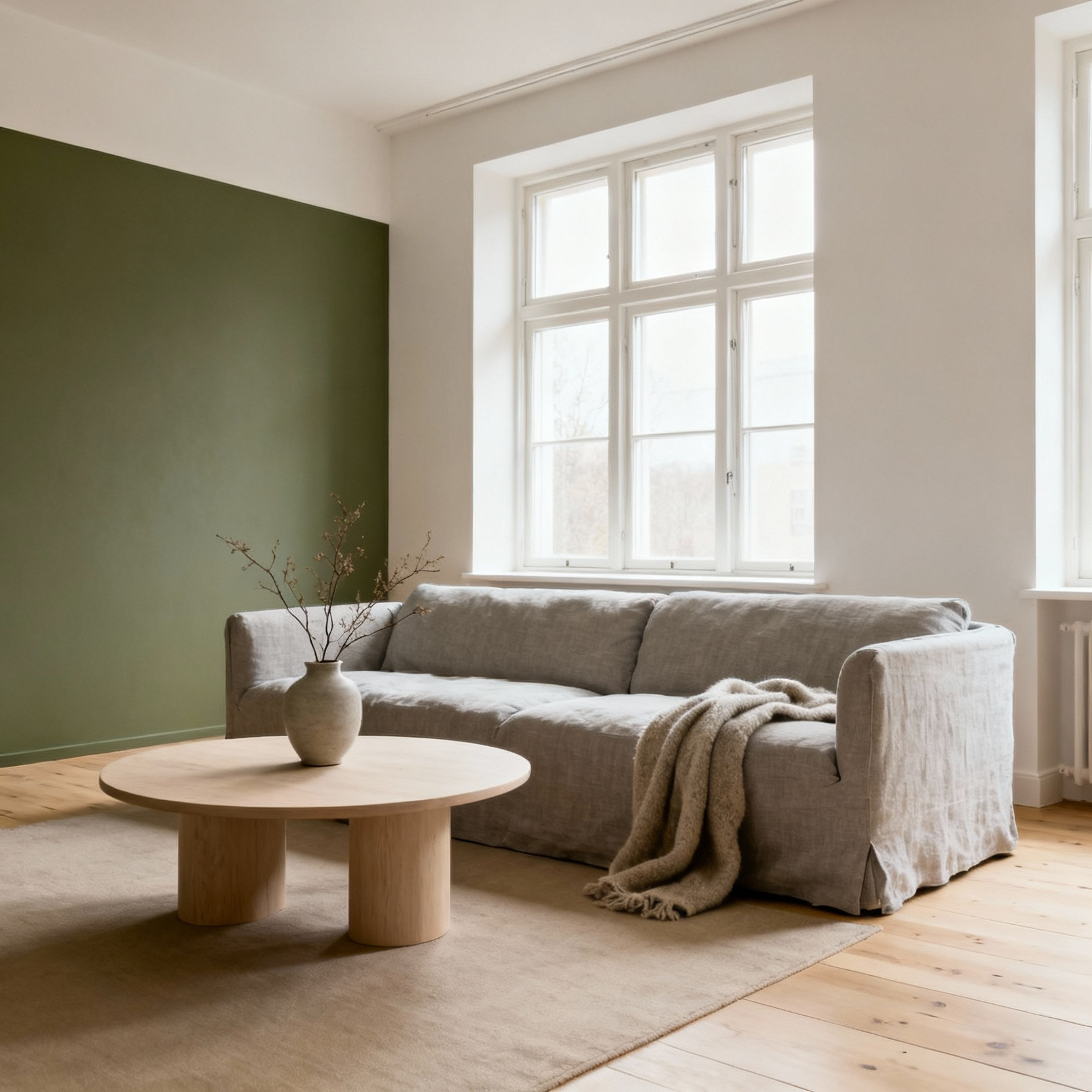
Discover 20 enduring principles for Scandinavian living room design inspiration from expert Henrik. Master *Hygge*, *Lagom*, and timeless Nordic design for a serene home.
To create a living space is, fundamentally, an act of self-expression—every choice reflects not just aesthetic preference, but deeper values about how life should be lived. The most compelling interiors aren’t decorated; they’re composed. They tell a coherent story of contentment and purpose. These twenty principles are my attempt to separate the feeling of an authentic Nordic home from a superficial imitation. They are the foundation for a space that doesn’t just look serene but truly feels it.
My work in Nordic interior design has taught me that the goal is not perfection, but a considered harmony between our lives and our surroundings. This isn’t about rigid minimalism or chasing trends. It’s about crafting a sanctuary that supports a simpler, more intentional way of life. We’ll explore this through three movements: first, the philosophical grounding of our space; then, the tangible world of materials and forms; and finally, the art of refining our home over time. This is more than living room design inspiration; it is a guide to creating a backdrop for a life well-lived.
The Swedish concept of lagom—”not too much, not too little, just right”—is the soul of Scandinavian balance. It’s a philosophy that quietly pushes back against excess. In a living room, this means every piece must justify its presence. Ask yourself: Is this sofa the right scale for the room and for our family’s comfort? Does this lamp provide the light we need without shouting for attention? Lagom is the calm confidence of a space that has everything it needs, and nothing it doesn’t.

What I tell my clients seeking warm, minimalist spaces is to think of it as finding a natural equilibrium. A space feels lagom when nothing is vying for attention, and the room as a whole feels complete. It’s the feeling of contentment that arises not from having more, but from having enough.
So much has been written about hygge, but at its heart, it’s a feeling, not a thing you can buy. It’s the profound sense of contentment that comes from a moment of quiet comfort. To bring this into a living room isn’t about accumulating more cushions; it’s about curating a sensory embrace. In my experience with Scandinavian design principles, true comfort comes from an orchestration of light, texture, and even sound.
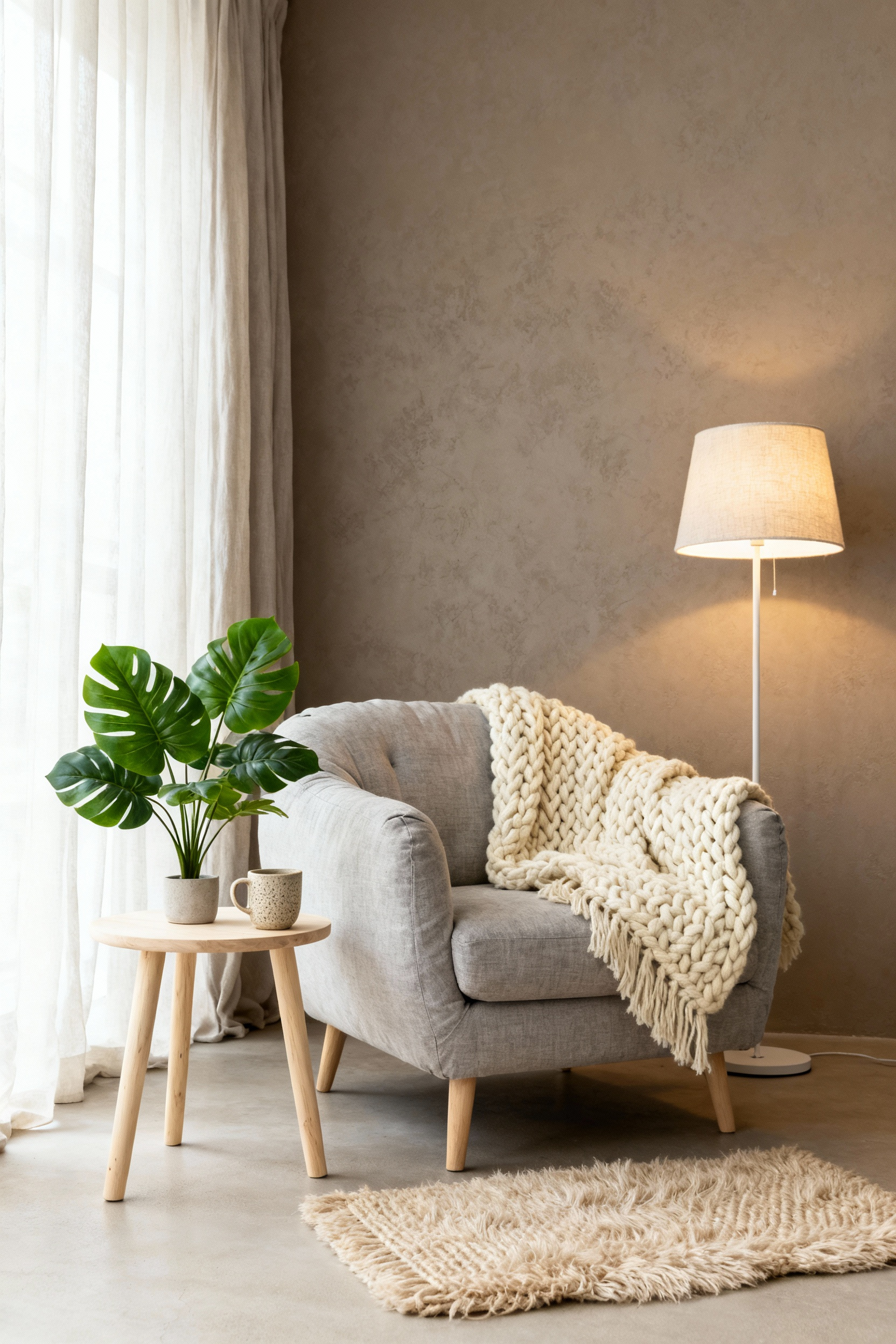
Ditch the single, harsh overhead fixture. Instead, create pools of warm, gentle illumination—a floor lamp angled over a favorite chair, a small table lamp casting a glow on a stack of books, and always, the simple flicker of real candlelight. Then, engage your sense of touch. A thick wool throw, the soft roughness of a linen cushion, a warm ceramic mug held between your hands. These textures are an unspoken invitation to slow down, to rest, and to feel genuinely secure.
Our innate connection to the natural world, or biophilia, is not a trend; it’s a deep-seated human need. A truly Scandinavian space honors this by weaving nature into its very fabric. This goes far beyond just a few potted plants. It’s about erasing the hard line between indoors and out. Maximize natural light with sheer curtains, use natural materials like wood and stone that feel honest and grounding, and let organic forms—in patterns, art, or the plants themselves—soften the geometry of the room.
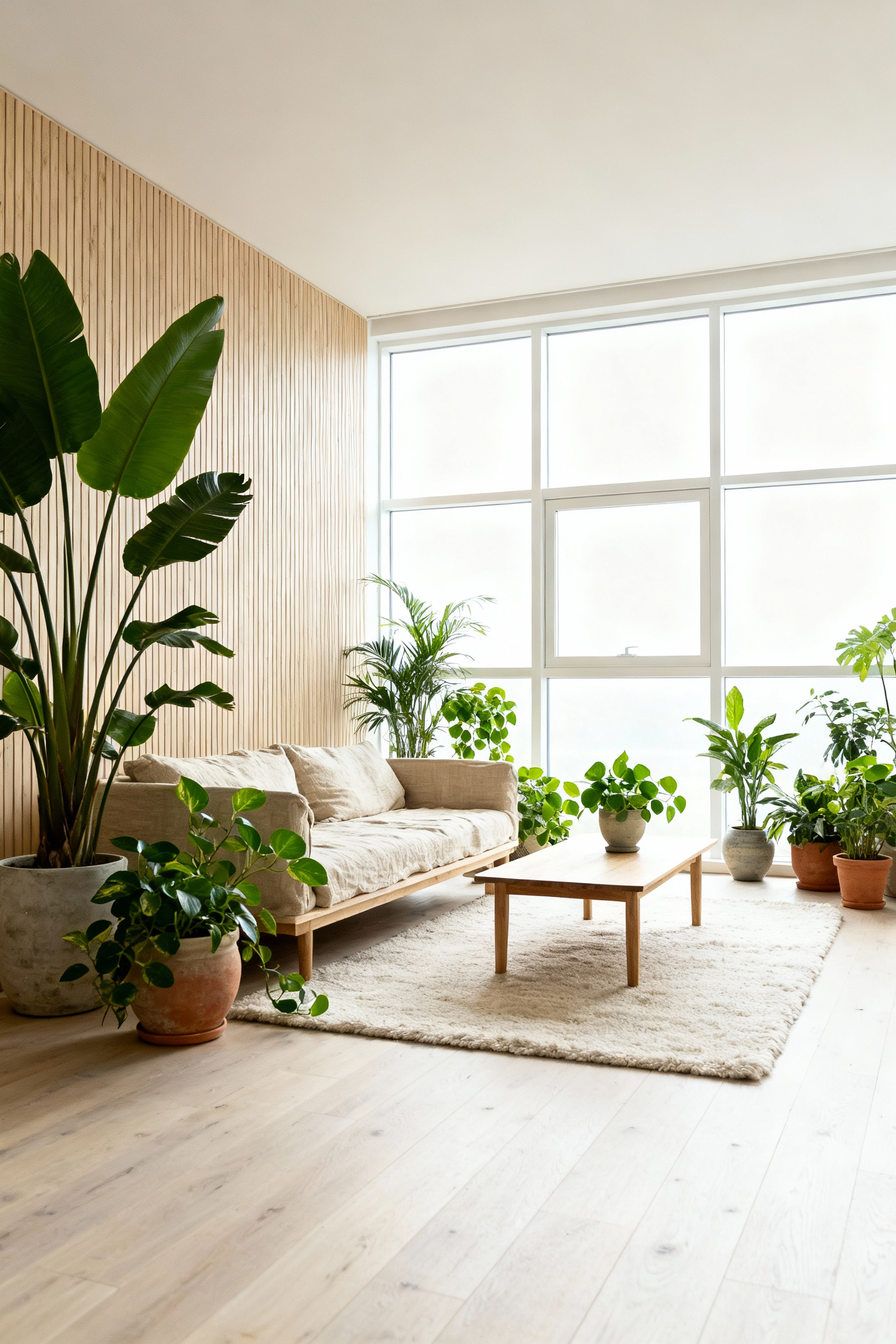
I’ve seen the most profound transformations in spaces that bring in a piece of raw nature. Not a perfectly polished log, but perhaps a sculptural piece of driftwood or a collection of stones from a favorite beach. These elements connect the home to a specific place and a specific memory, making the biophilic connection deeply personal.
The phrase “less is more” is often misunderstood as a call for stark emptiness. Actually, it’s about a mindful edit to achieve uncluttered harmony. This is the practice of intentional reduction, ensuring every object serves a purpose, sparks joy, or holds real meaning. A space with room to breathe allows the mind to rest. It gives the few, well-chosen items on display a powerful presence.

What this requires is honesty. It means letting go of things you hold onto out of obligation. What I’ve learned is that an empty corner can be more beautiful and calming than one filled with something that doesn’t resonate. Let the empty space become a design element in itself, one that signifies peace and clarity.
A living room is rarely just for “living.” It’s for conversing, reading, watching a film, and sometimes, for quiet solitude. Perceiving these different typologies—or functions—is key to creating a holistic flow. Instead of one monolithic space, think of creating smaller, distinct zones within the larger room. A conversational area with seating oriented inwards, a quiet reading nook with its own dedicated lamp, a soft area for children to play.

These zones don’t need walls. You can define them subtly with a rug, the placement of a floor lamp, or a piece of furniture like a low credenza. The goal is to make the room’s function intuitive, so that moving from one activity to another feels effortless and natural. It’s a way of choreographing daily life with grace.
You don’t need a degree in psychology to understand Gestalt principles, because your brain already uses them. These principles explain how we perceive individual elements as a unified whole. We can use this to create visual coherence and cognitive ease. For example, grouping similar objects (like a cluster of framed photos) makes them read as one unit—the principle of Proximity. Using a recurring material like light oak throughout a room ties disparate pieces of furniture together—the principle of Similarity.

The principle of Continuity is one I use often. Guiding the eye along a clean horizontal line—created by a long, low media unit or a picture ledge—makes a space feel calmer and more expansive. By understanding these intuitive rules, you’re not just placing objects; you are composing a scene that the mind can process effortlessly, creating an inherent sense of order.
A truly beautiful object has a beautiful story. Understanding where your furniture and decor come from—its provenance—adds a layer of meaning that mass-produced items can never have. Ethical sourcing is about making conscious choices: selecting wood from sustainably managed forests (look for FSC certification), choosing textiles made without harmful chemicals, and supporting artisans who are paid fairly for their craft.

In my own home, one of my most cherished pieces is a simple wooden bowl, carved by an artisan I met on my travels. Knowing the hands that made it gives it a soul. This isn’t about snobbery; it’s about respect. When you invest in pieces with a clear and ethical history, you fill your home with positive energy and become a steward of good design and responsible consumerism.
So much of our modern world is smooth, flat, and digital. A well-designed home should be a feast for the hands as well as the eyes. Introducing a diverse range of textures is what gives a minimalist space depth and warmth. Think of the dialogue between different surfaces: the cool, grounding feel of a stone coaster, the slight roughness of a linen sofa, the deep softness of a wool rug, and the smooth grain of an oiled wood tabletop.
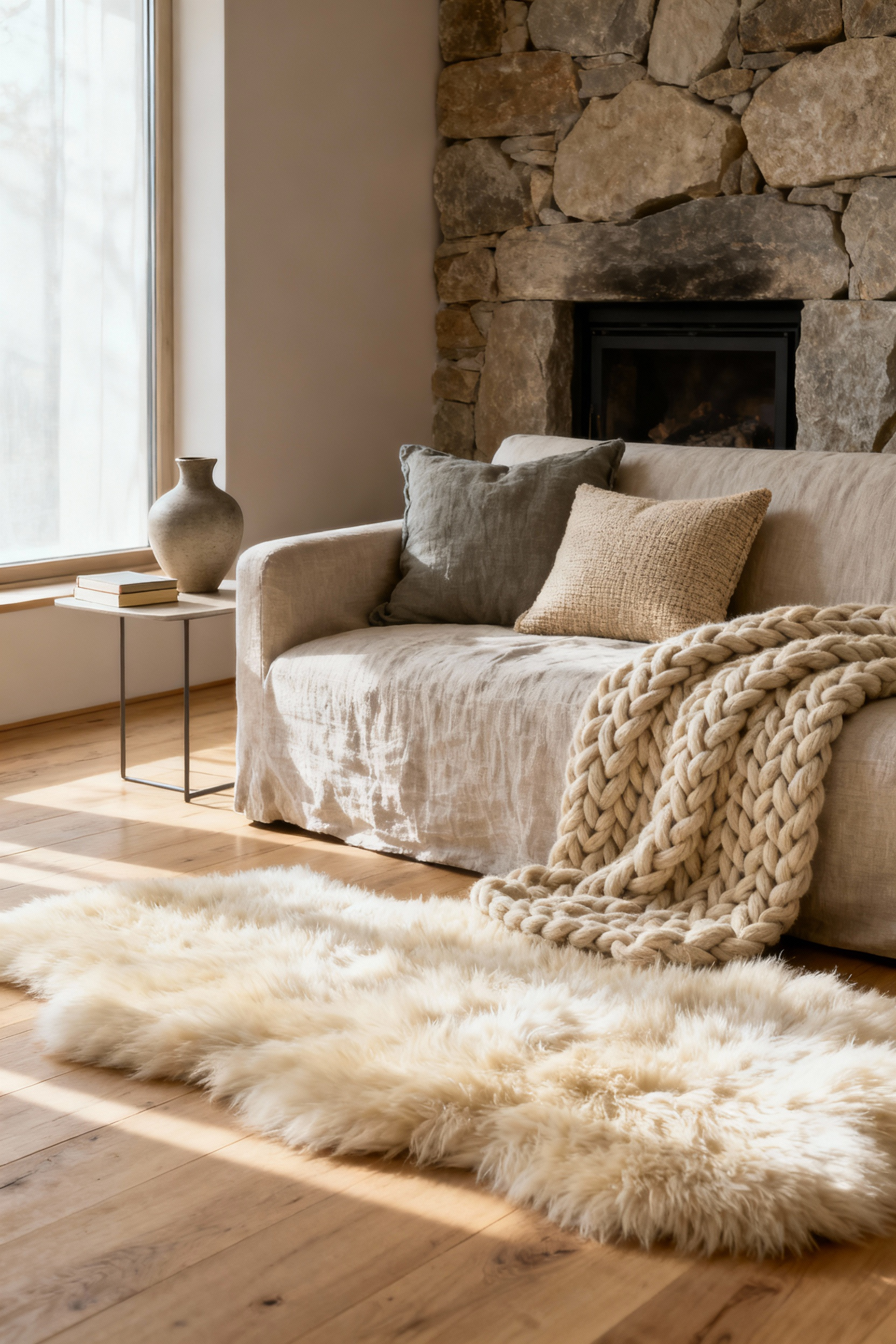
This contrast is what creates interest. I learned this when I was trying to create a cozy corner in a very modern, almost sterile space. Adding just three things—a sheepskin throw, a chunky knit cushion, and a ceramic pot with a matte, unglazed finish—completely transformed the feel of the corner. It became inviting and human. Don’t be afraid to layer textures; it’s the key to making minimalism feel rich.
In Scandinavia, light is a precious commodity. We learn to manage it, celebrate it, and create it with intention. Strategic lighting is about more than just being able to see; it’s about shaping the atmosphere of a room. Never rely on a single overhead light. Instead, layer your lighting with three distinct purposes.

First, ambient light, the general glow from floor lamps or sconces. Second, task lighting, for specific activities like a focused beam for reading. Third, accent lighting, like a warm, low-wattage lamp that creates a cozy corner, or candlelight. Using dimmers on everything is non-negotiable. It allows you to tailor the light to the time of day and mood, shifting from bright and energizing in the afternoon to soft and hyggelig in the evening.
A room can look perfectly serene, but if it echoes with every footstep, it will never feel calm. The acoustic quality of a space—its aural scenography—is an invisible layer of comfort. Hard surfaces like glass, concrete, and bare wood floors reflect sound, creating harsh reverberations. The solution is to introduce soft, sound-absorbing materials.
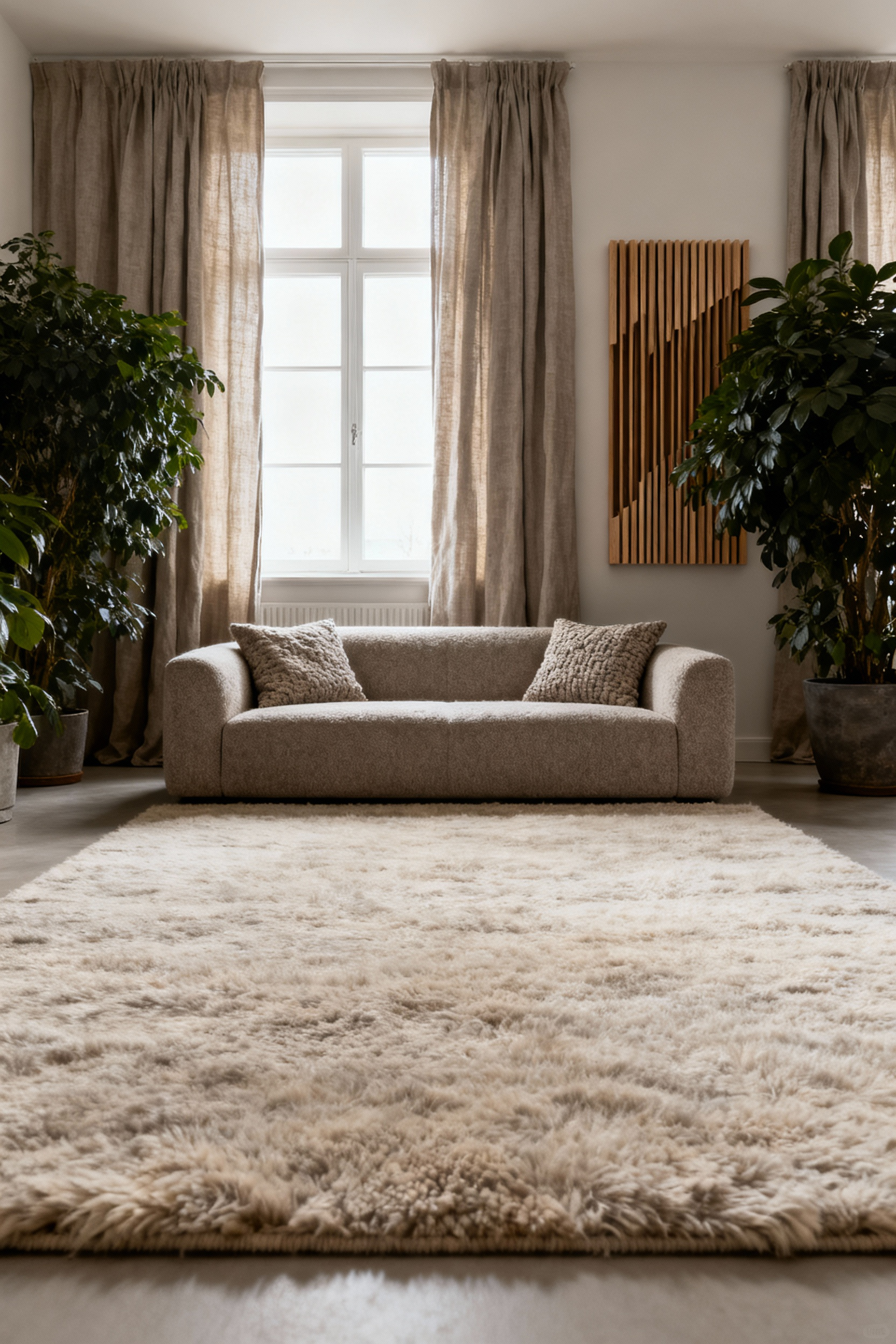
Think of it this way: everything soft is your friend. High-pile rugs, thick curtains, upholstered furniture, and even a wall of books are incredibly effective at dampening noise. One client had a living room with beautiful but noisy hardwood floors. Instead of one large rug, we layered two slightly different-sized rugs. This not only solved the acoustic issue but also added a wonderful textural depth to the room.
Comfort is not an indulgence; it’s a fundamental requirement of good design. Furniture should serve the human body, not the other way around. Ergonomic empathy means selecting pieces that offer genuine, lasting comfort. When choosing a sofa, don’t just look at it. Sit in it. Does the seat depth support your legs? Does the backrest offer support where you need it?
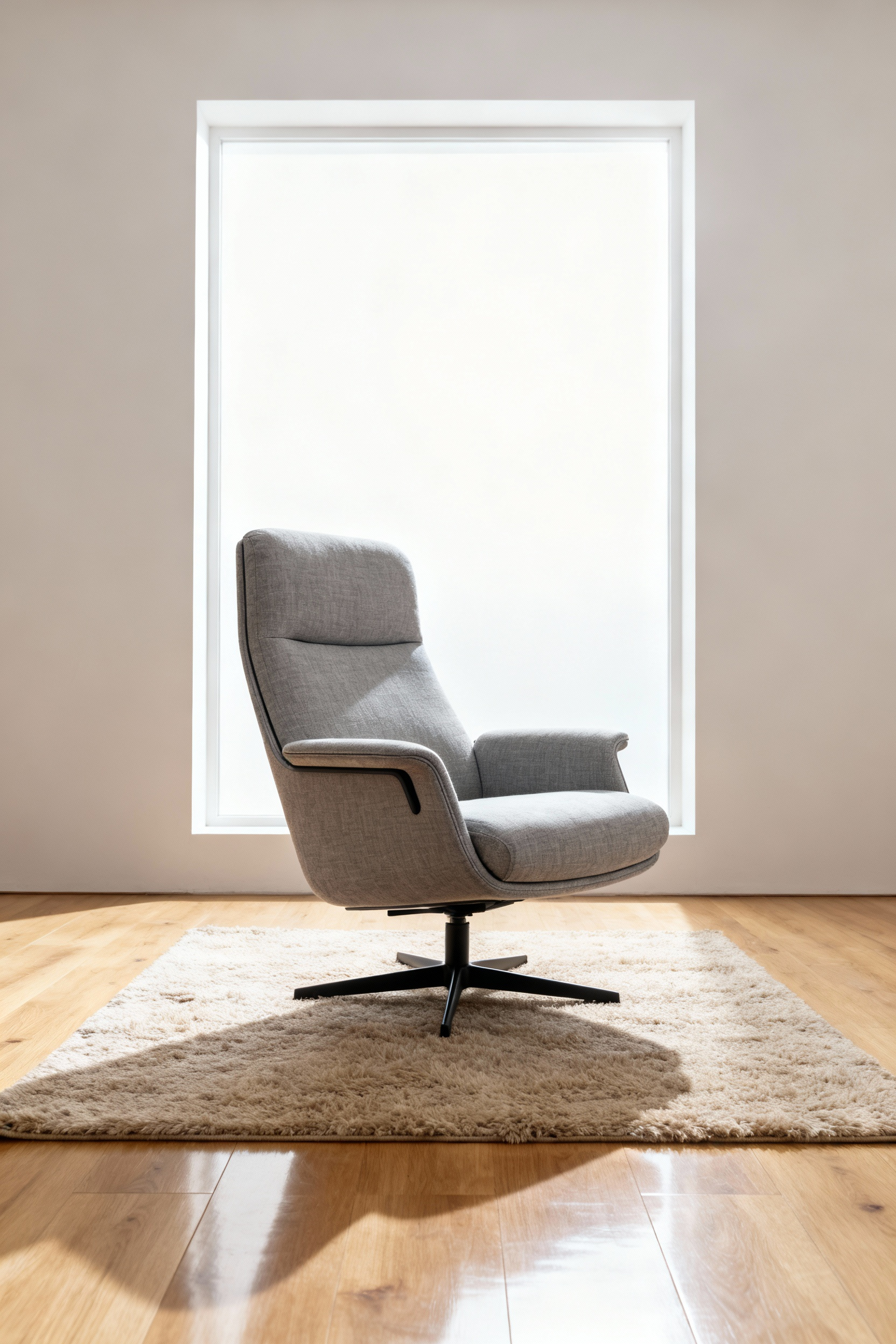
I’ve noticed people are often swayed by a sofa’s look, only to regret it when they realize it’s impossible to relax in. A beautiful chair that you can’t sit in for more than ten minutes is just a sculpture. The Scandinavian masters like Hans Wegner understood this perfectly; their most iconic designs are born from a deep respect for the human form. Prioritize how furniture feels, and the right aesthetic will follow.
What you leave out of a room is just as important as what you put in. Negative space—the empty, unfurnished volume—is an active and powerful design element. It gives objects room to breathe, prevents visual chaos, and creates a sense of expansive calm. The Nordic aesthetic is often about restraint, allowing a single, beautifully crafted piece to have its own space and be truly appreciated.

Resist the urge to fill every wall and every corner. An unadorned wall behind a striking armchair is far more powerful than a cluttered one. Negative space allows the eye to rest. It guides movement through the room and creates a rhythm, much like the pauses in a piece of music. Think of it not as emptiness, but as purposeful silence.
In a world obsessed with newness, there is a profound beauty in things that show their age. Patina—the soft sheen on old wood, the mellowing of unlacquered brass, the subtle wear on a leather chair—is a mark of quality and history. It tells a story. Embracing aged materials rejects our throwaway culture and introduces a soulful narrative into a space.

Look for vintage pieces, or invest in new items made from materials that will age gracefully. That dining table with a few marks isn’t damaged; it’s a record of family meals. That leather chair isn’t worn out; it has been shaped by the lives lived in it. These “imperfections” are the pedigree of a well-loved home, giving it a warmth and authenticity that a showroom can never replicate.
Color in Scandinavian design is a whisper, not a shout. It’s used with precision to influence mood and the perception of space. The foundation is often a palette of calm neutrals—warm whites, soft greys, muted earth tones. These colors reflect light beautifully and create a serene backdrop. But this doesn’t mean a complete absence of color.
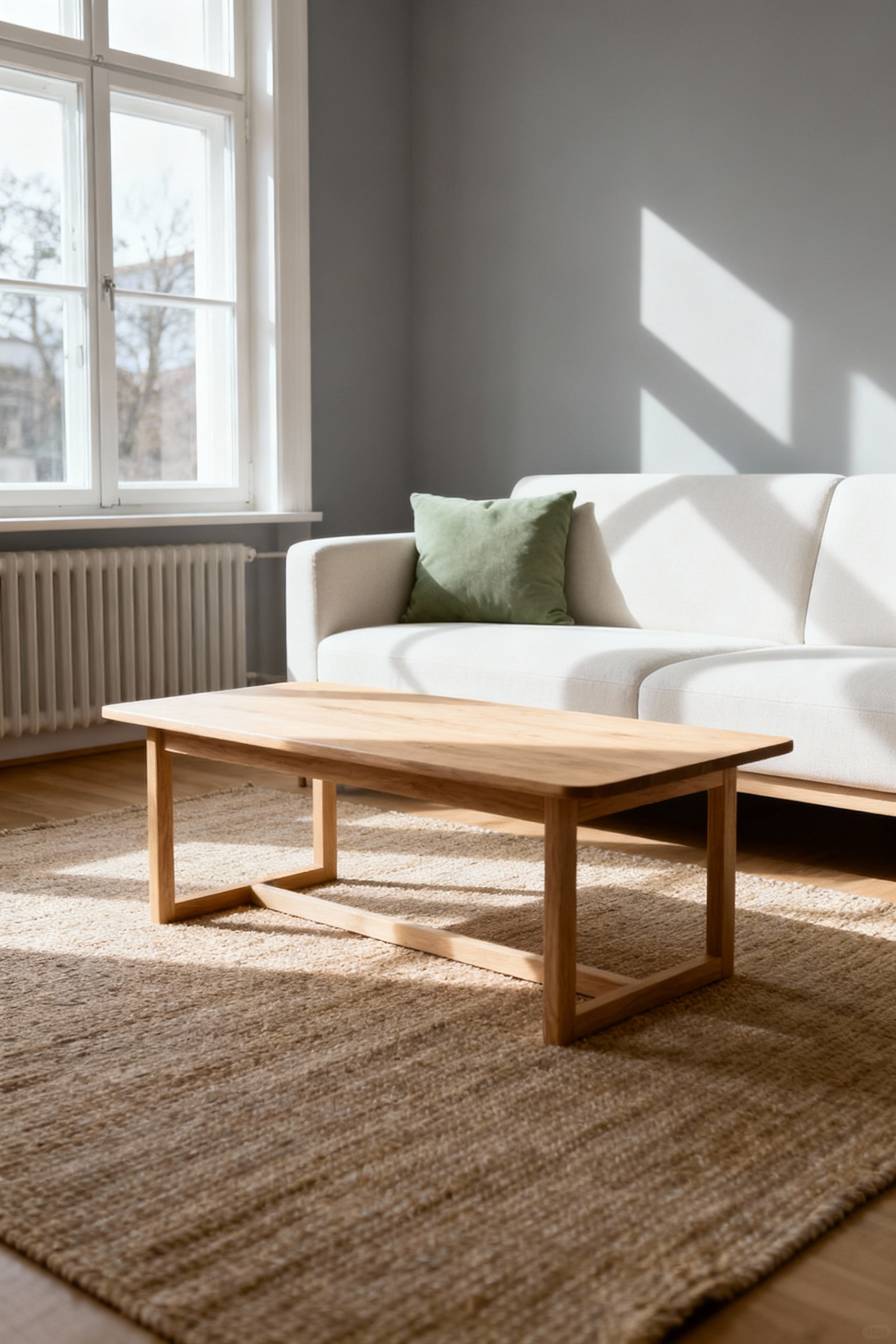
Accent hues are chosen for their psychological resonance. A deep forest green can feel grounding and restorative. A dusty, muted blue can be incredibly calming. Use these colors intentionally—on a single wall, a cluster of cushions, or a piece of art—to add depth and emotion without overwhelming the space. Always test colors in your own light, as the way a color feels can change dramatically throughout the day.
Art is not an afterthought; it is an anchor. A well-chosen piece can ground an entire room, setting the tone and providing a focal point that expresses your personality. This isn’t about matching art to your sofa. It’s about selecting pieces that you connect with on an emotional or intellectual level. The art should start a conversation, both literally and with the other elements in the room.

Consider scale. A large, singular piece can create a powerful, contemplative mood. A gallery wall of smaller pieces can feel more intimate and narrative. What I tell my clients is to trust their instincts. Choose pieces that move you, and then build the space around them. The right art can provide living room design inspiration for years, long after other elements have changed.
Life is not static, and our homes shouldn’t be either. Designing with modular versatility allows your space to adapt and evolve with your needs. This means choosing furniture that can serve multiple functions or be easily reconfigured. A sectional sofa that can be rearranged, nesting tables that can be separated or combined, or a storage system that can be added to over time are all wise investments.
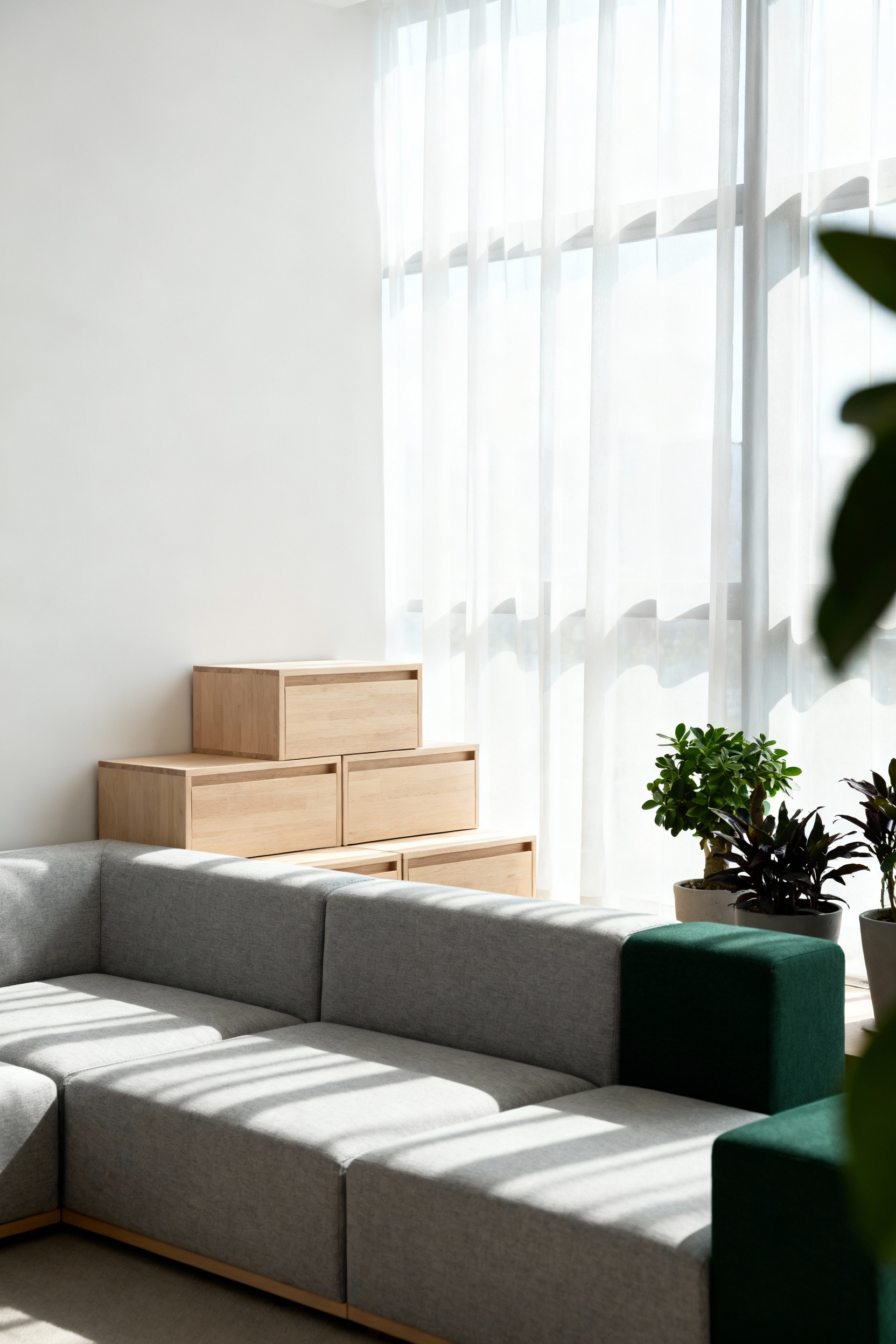
This approach is inherently sustainable, as it reduces the need to replace furniture as your life changes. It also empowers you to refresh your space without buying anything new. It’s about creating a living room that is a responsive partner in your life, not a rigid set piece.
While harmony is the goal, a space without any tension can feel a little flat. The artful juxtaposition of contrasting elements is what creates visual intrigue. This can be subtle: placing a rough, hand-woven textile next to a smooth, cool metal object. Or it can be more pronounced: setting a rustic, antique wooden stool beside a sleek, modern sofa.
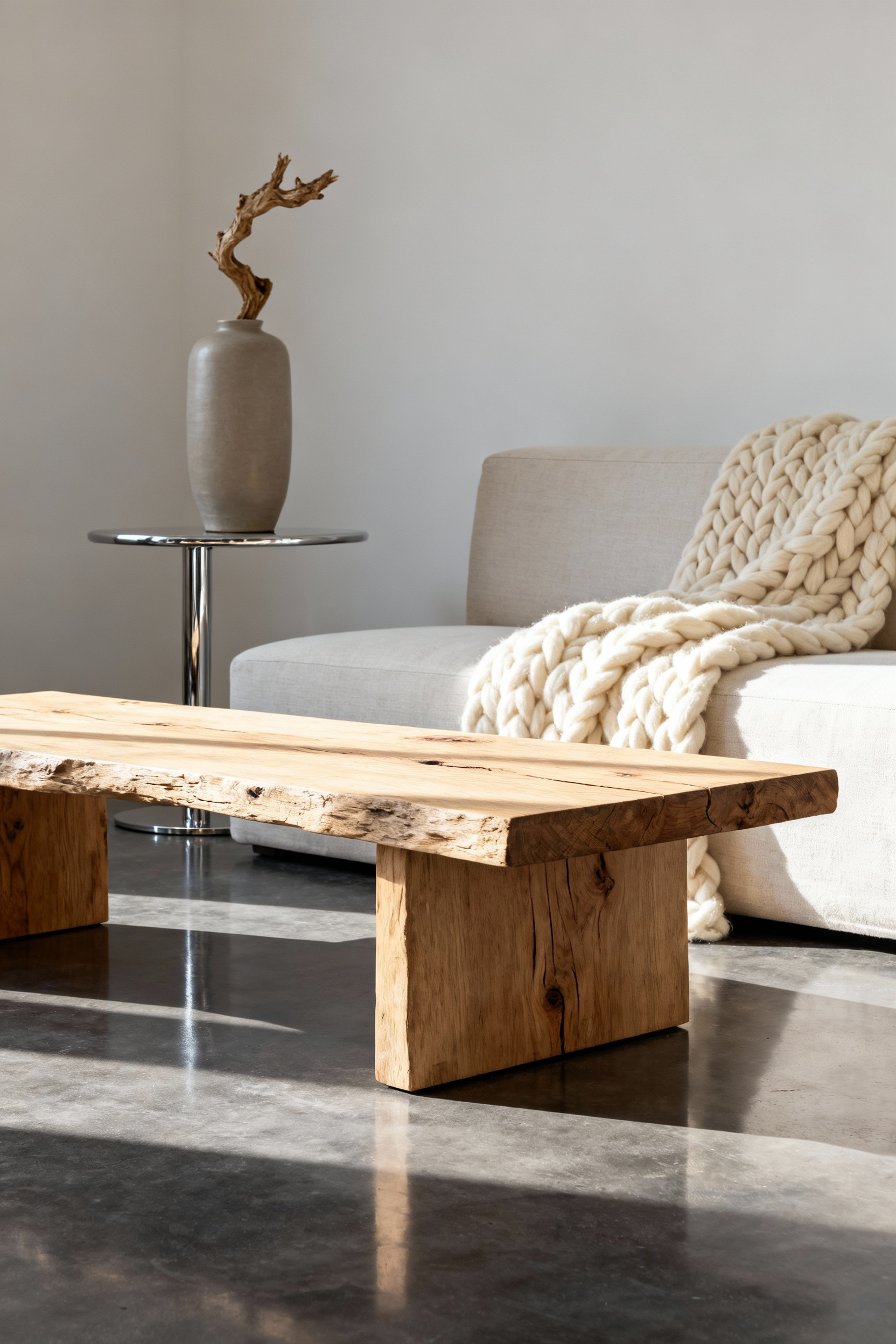
This dialogue between old and new, rough and smooth, linear and organic, is what gives a room character and depth. It prevents it from feeling like it was all purchased from a single catalog page. This considered blend of contrasts shows a curated eye and creates a space that feels collected and personal over time.
Transient trends are the enemy of sustainable and serene design. Instead of chasing what’s fashionable this season, invest in enduring forms—pieces with a timeless quality that transcends style. Often, these are iconic designs that have remained relevant for decades because their form, function, and craftsmanship are exceptional.
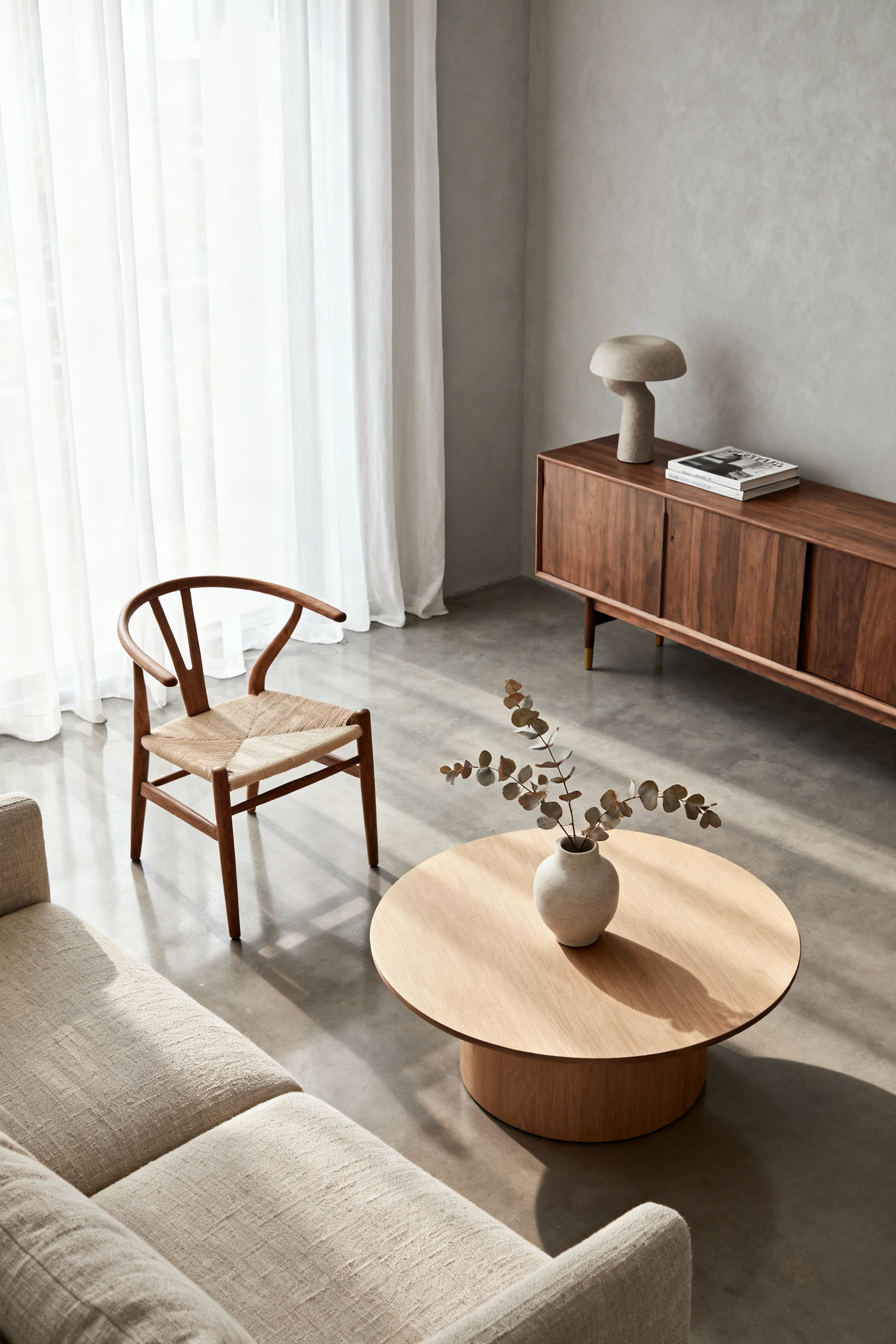
Building a room around these “forever pieces”—a classic armchair, a beautifully made sideboard, a simple yet elegant coffee table—creates a foundation of quality. You can then layer in smaller, more personal, and perhaps trendier accents that can be easily changed over time. This approach ensures your living room will feel relevant and beautiful for many years to come, representing a true investment in your home.
True quality is often found in the details you don’t notice at first. The precision of the joinery on a wooden cabinet, the satisfying weight of a well-made door handle, the way a drawer glides silently shut. These are the imperceptible markers of craftsmanship that contribute to an overall feeling of quiet luxury and care.
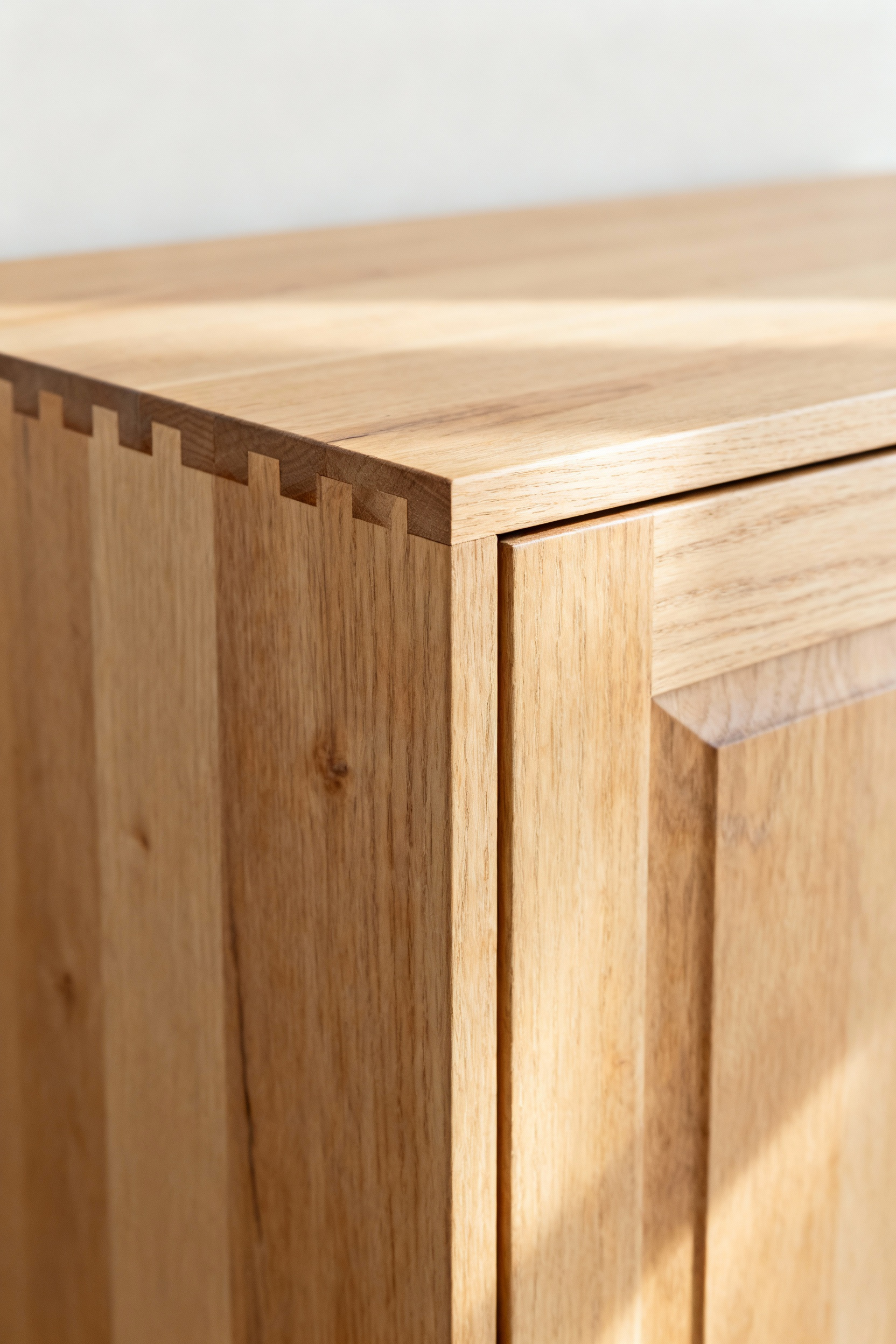
When you’re choosing pieces, look closely. Are the seams on the upholstery straight? Is the wood grain matched thoughtfully? These might seem like small things, but they are a testament to an object’s integrity. Over time, it is this silent, well-made quality that brings a deep and lasting sense of satisfaction.
Even in an open-plan living room, creating smaller “micro-environments” is key to making the space feel intimate and highly functional. These are zones designed for specific activities that invite engagement. The beauty of this is that a single room can serve many needs without feeling chaotic.
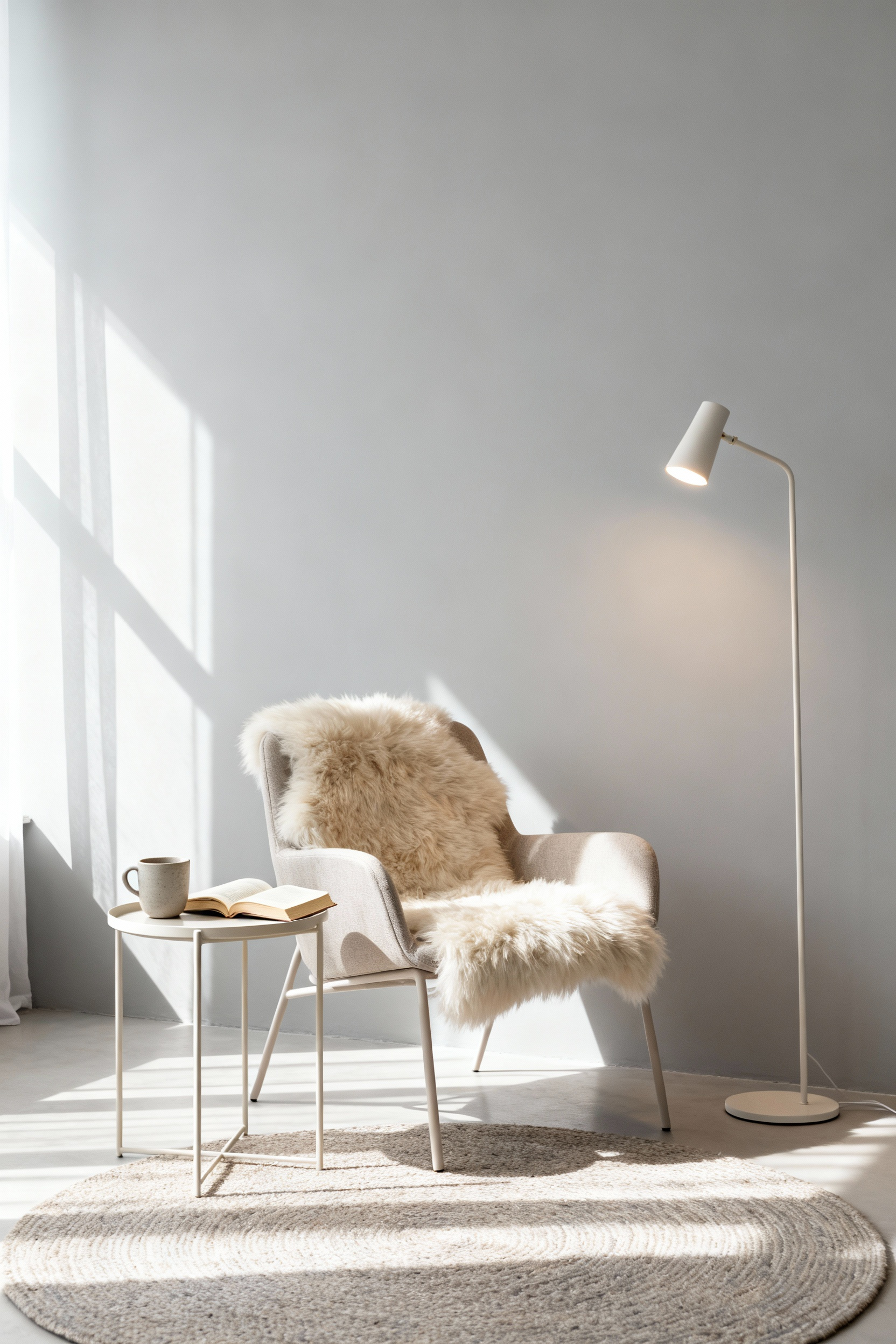
For instance, two comfortable armchairs placed near a window with a small table between them becomes a dedicated space for morning coffee and conversation. A chaise longue tucked into a quiet corner with its own floor lamp is a personal sanctuary for reading. By crafting these small havens, you make a large space feel more human-scale, more comforting, and ultimately, more livable.
These twenty principles are not a rigid set of rules, but a philosophical compass to guide you toward a more intentional and serene home. The journey of creating a living room that truly reflects your values is one of constant, gentle refinement. It’s about listening to the space, understanding how you live within it, and having the confidence to choose quality, comfort, and authenticity over all else. In the end, a Scandinavian living space is not about a particular look, but a particular feeling: the deep, quiet contentment of being truly at home.